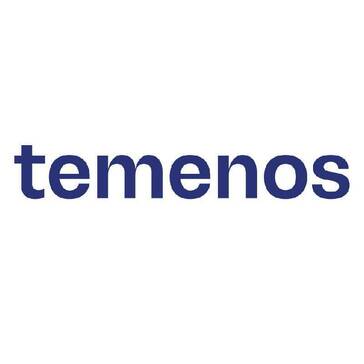Description

MX

Temenos Transact
Comprehensive Overview: MX vs Temenos Transact
To provide a comprehensive overview of MX and Temenos Transact, let's break it down by addressing the specific aspects of these two products:
a) Primary Functions and Target Markets
MX
Primary Functions:
- Financial Data Aggregation: MX specializes in aggregating financial data from various sources, enabling users to see all their financial information in a single view.
- Data Enhancement: The platform enhances transactional data with categorization and cleansing, making it more actionable and meaningful for end-users.
- Personal Financial Management (PFM): MX offers tools that provide budgeting, analysis, and financial insight to consumers and financial institutions.
- Connectivity & Integration: MX provides APIs and connectivity solutions for fintech developers and institutions to integrate financial data into their apps.
Target Markets:
- Financial Institutions: Banks, credit unions, and other financial service providers looking to improve customer engagement through enhanced data services.
- Fintech Companies: Startups and established fintech firms that require reliable financial data aggregation and analysis.
- Wealth Management: Companies offering personalized financial services to manage clients’ wealth efficiently.
Temenos Transact
Primary Functions:
- Core Banking: Temenos Transact is a leading core banking platform, providing end-to-end banking solutions including account management, transactions, payments, and lending.
- Architecture and Technology: It offers cloud-native, API-first, and microservices-based architecture to ensure scalability and efficient digital transformation.
- Product Flexibility: Supports a broad spectrum of banking products, such as retail, corporate, and Islamic banking.
- Regulatory Compliance: Ensures adherence to global and local regulatory requirements, providing banks with governance tools.
Target Markets:
- Global Banks: Large-scale banks requiring a robust and scalable core banking platform.
- Challenger Banks: New market entrants looking to leverage cutting-edge technology for competitive advantage.
- Regional Banks: Institutions seeking localized solutions with global support.
b) Market Share and User Base
MX
- Market Share: MX is a significant player in the fintech space, especially valued for its data aggregation services. It's prominent in North America with expanding reach globally.
- User Base: It boasts numerous partnerships with various financial institutions and fintech companies, serving millions of end-users who access financial data services through these partnerships.
Temenos Transact
- Market Share: Temenos is one of the leaders in core banking software globally. It has a substantial market share, particularly in Europe and other international markets, with growing adoption in North America.
- User Base: More than 3,000 banks, including 41 of the world’s top 50 banks, use Temenos software, serving hundreds of millions of customers worldwide.
c) Key Differentiating Factors
MX
- Focus on Data: MX’s key strength is its ability to aggregate and enhance financial data, providing valuable insights and user engagement tools.
- API and Ecosystem: Offers a robust API platform for integrating financial data into third-party applications, adding considerable flexibility for developers.
- User Experience: Known for superior user interface design and customer engagement capabilities, it helps financial institutions offer a better end-user experience.
Temenos Transact
- Comprehensive Banking Solution: Provides a full suite of core banking functionalities, from retail and wholesale to Islamic banking, all on a single platform.
- Scalability and Security: Designed to handle large-scale banking operations with high levels of security and compliance, a crucial factor for large and regulated banks.
- Cloud-Native Design: Offers cloud-first capabilities that allow banks to leverage the advantages of cloud computing, like agility, cost-efficiency, and fast deployment.
In summary, while MX focuses on financial data aggregation and enhancement, Temenos Transact offers a comprehensive core banking solution for traditional and modern banks. Both play crucial roles in the financial technology ecosystem, catering to different needs within the financial services industry.
Contact Info

Year founded :
1978
Not Available
Not Available
India
Not Available

Year founded :
Not Available
Not Available
Not Available
Not Available
Not Available
Feature Similarity Breakdown: MX, Temenos Transact
When comparing MX and Temenos Transact, both of which are significant players in the financial technology space, it's important to note that they offer overlapping yet distinct functionalities tailored to different aspects of financial institutions' needs. Here is a feature similarity breakdown:
a) Core Features in Common:
- Banking Operations: Both MX and Temenos Transact facilitate fundamental banking operations including account management, transaction processing, and loan servicing.
- Data Analytics: They provide data analytics tools that enable financial institutions to gain insights into consumer behavior and optimize product offerings.
- APIs and Integrations: Each platform supports APIs and integrations to effectively connect with various fintech ecosystems and third-party services.
- Security and Compliance: Both systems prioritize robust security features and compliance with financial regulations such as KYC (Know Your Customer) and AML (Anti-Money Laundering).
- Customer Engagement: They offer tools to enhance customer engagement through personalized banking experiences and financial wellness insights.
- Scalability: Each system is designed to scale, accommodating growth and increased transaction volumes for banks and credit unions.
b) Comparison of User Interfaces:
- MX User Interface: Known for its modern, intuitive, and user-friendly interface, MX focuses heavily on simplifying financial activities for consumers. The UI is designed to deliver clear and actionable insights with emphasis on customer-centric design principles, often appealing to tech-savvy and younger users.
- Temenos Transact User Interface: Temenos Transact aims to provide a comprehensive and flexible interface that can be customized to meet the specific needs of various types of financial institutions. While robust, its UI may come across as more traditional and complex given its focus on full-service banking operations. Temenos has made efforts to streamline its interface for better user experiences, but its depth of functionality might require a steeper learning curve.
c) Unique Features Setting Each Product Apart:
- MX:
- Data Aggregation: One of MX’s standout features is its data aggregation capability, which integrates and organizes financial data from multiple sources and presents it in a consolidated view for better user insights.
- Financial Advocacy: MX emphasizes financial health and advocacy, providing users with educational resources and wellness tools to make better financial decisions.
- Temenos Transact:
- Core Banking Flexibility: Temenos Transact is primarily recognized for its comprehensive core banking capabilities that can be customized and deployed in both cloud and on-premise environments, meeting diverse banking needs worldwide.
- Global Reach and Multicurrency Support: Temenos excels in providing solutions suitable for global banks with multi-currency and multi-language requirements, enabling institutions to operate seamlessly across borders.
- Rich Ecosystem and Marketplace: Temenos Transact benefits from a large partner and solution ecosystem, including a marketplace that offers pre-integrated fintech solutions to enhance its banking capabilities.
In summary, while MX and Temenos Transact offer common fintech functionalities, MX emphasizes data aggregation and financial wellness tools, whereas Temenos Transact provides deep core banking capabilities with a focus on flexibility and global banking needs.
Features

Not Available

Not Available
Best Fit Use Cases: MX, Temenos Transact
MX and Temenos Transact are both prominent solutions in the financial technology space, designed to meet the needs of various businesses and projects. Each has its strengths and ideal use cases based on the specific requirements of organizations.
a) For what types of businesses or projects is MX the best choice?
MX is primarily recognized for its data-driven financial management solutions. Here are the best-fit use cases:
-
Financial Institutions Focused on Data Aggregation and Insights:
- Banks, credit unions, and fintech companies seeking to enhance their data aggregation capabilities to provide better insights and personalized financial advice to their customers.
- Institutions looking to leverage data for advanced analytics, enabling sophisticated data-driven decision-making processes.
-
Businesses Emphasizing Customer Engagement:
- Companies aiming to improve customer engagement through enhanced personal financial management tools.
- Financial service providers seeking to offer intuitive, digital-first experiences to their clientele, focusing on user-friendly interfaces and comprehensive financial health tools.
-
Projects Involving Financial Data Connectivity:
- Initiatives that require seamless integration with various financial accounts, applications, and platforms.
- Businesses needing robust APIs for financial data aggregation and connectivity.
b) In what scenarios would Temenos Transact be the preferred option?
Temenos Transact is a core banking solution known for its comprehensive and scalable capabilities. Scenarios for preferring Temenos Transact include:
-
Core Banking Transformation Projects:
- Banks looking to modernize their legacy systems with a flexible and scalable core banking platform.
- Financial institutions seeking to enhance operational efficiency, reduce costs, and improve service delivery through a robust, end-to-end banking platform.
-
Businesses Requiring Extensive Product and Service Offerings:
- Organizations that need to manage a wide range of products and services, including deposits, lending, payments, and wealth management.
- Companies aiming for rapid product innovation and time-to-market capabilities in a competitive banking landscape.
-
Institutions Demanding Regulatory Compliance and Security:
- Banks and financial institutions that need a solution compliant with global regulatory standards while ensuring high-security measures.
- Organizations looking for a core banking system that facilitates compliance with local and international regulations seamlessly.
d) How do these products cater to different industry verticals or company sizes?
MX:
-
Industry Verticals:
- Primarily serves the financial services industry, including banks, credit unions, and fintech companies.
- Also applicable in sectors where financial data integration and insights are crucial, such as insurance and wealth management.
-
Company Sizes:
- Best suited for small to medium-sized financial institutions that require agile and innovative solutions to enhance customer engagement and insights without the resources of a large-scale core banking system.
- Also used by larger institutions looking to supplement their existing systems with advanced data capabilities.
Temenos Transact:
-
Industry Verticals:
- Primarily targets traditional banking and financial services but is adaptable for specialized sectors such as retail banking, corporate banking, and treasury management.
- Also applicable to microfinance institutions and digital-only banks.
-
Company Sizes:
- Suitable for medium to large financial institutions due to its scalability and extensive functionality.
- Smaller banks with ambitious growth plans or those requiring a comprehensive system from the start may also benefit, although implementation resources may be more demanding.
In summary, MX is an excellent choice for businesses prioritizing financial data integration and customer engagement, especially in smaller to medium-sized institutions. Temenos Transact suits larger institutions or those undergoing core banking transformations with complex requirements across numerous services and markets.
Pricing

Pricing Not Available

Pricing Not Available
Metrics History
Metrics History
Comparing undefined across companies
Conclusion & Final Verdict: MX vs Temenos Transact
To provide a conclusion and final verdict for MX and Temenos Transact, we need to consider overall value, pros and cons, and specific recommendations for users trying to decide between these two financial technology products.
Conclusion and Final Verdict
a) Consideration of Overall Value:
Both MX and Temenos Transact offer significant value in their respective domains. However, which product offers the best overall value depends on the specific needs and context of the user.
-
MX: Best suited for institutions looking for a robust financial data aggregation and insights platform. MX excels in providing powerful tools for data collection, cleansing, enhancement, and presentation. Financial institutions focused on enhancing user experience with improved financial insights may find MX offers substantial value.
-
Temenos Transact: More suitable for institutions that need a comprehensive core banking solution. Temenos Transact offers extensive functionalities covering retail, corporate, wealth management, and other banking services. Banks looking for a full-stack core banking platform that ensures scalability, flexibility, and robust compliance might find Temenos Transact to be the better choice.
b) Pros and Cons of Each Product:
-
MX:
-
Pros:
- Strong capabilities in data aggregation and financial data insights.
- Enhances user experience with personalized financial recommendations.
- Integrates with various financial platforms and systems.
- Focus on security and data privacy.
-
Cons:
- Primarily focused on data aspects and not a complete core banking solution.
- May require integration with additional systems for banks needing a comprehensive suite.
-
-
Temenos Transact:
-
Pros:
- Comprehensive core banking functionalities covering various banking needs.
- Highly scalable and flexible, designed for institutions of different sizes.
- Strong global presence and regulatory compliance support.
- Offers modular approach allowing customization according to banking needs.
-
Cons:
- Implementation can be complex and resource-intensive.
- Higher upfront costs associated with deploying a complete core banking solution.
- Longer time to deploy and integrate compared to more niche-focused platforms.
-
c) Recommendations for Users Deciding Between MX vs. Temenos Transact:
-
For Financial Institutions Focused on Data Insights and User Engagement:
- Consider MX if your primary need is to aggregate and analyze financial data to improve end-user experience. Choose MX if you already have robust core banking infrastructure and need a specialized tool to enhance digital banking services.
-
For Institutions Seeking a Comprehensive Core Banking System:
- Choose Temenos Transact if you require an all-encompassing platform that can handle the full spectrum of core banking operations. This is especially advantageous if you're a mid to large-sized bank aiming for digital transformation and scalability.
-
Hybrid Approach:
- For banks that want the best of both worlds and have the resources, consider leveraging both platforms; using Temenos Transact for core banking needs and integrating MX for enhanced data analytics and customer engagement features.
In conclusion, the optimal choice depends heavily on an institution's specific goals, current infrastructure, and long-term vision. It's crucial for decision-makers to thoroughly assess their internal requirements and potentially consult with experts or both vendors to ensure the chosen solution aligns with their strategic objectives.
Add to compare
Add similar companies




